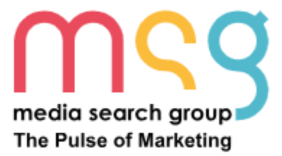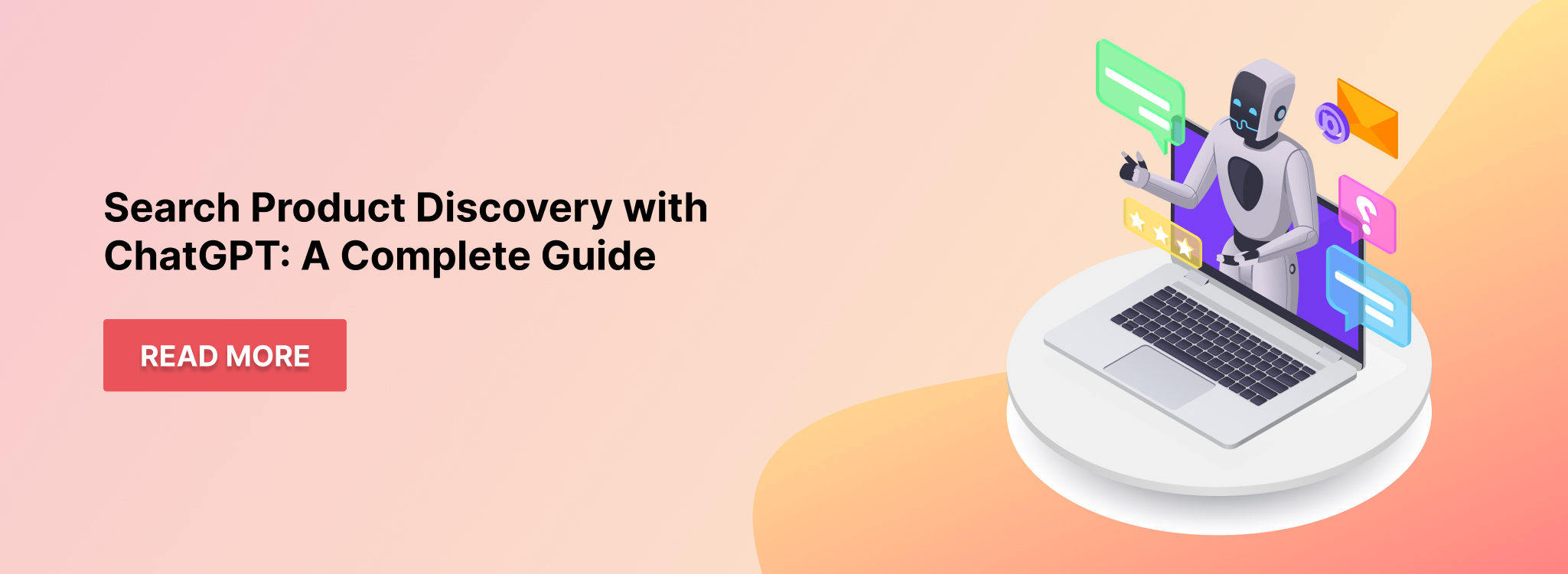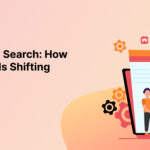Search Product Discovery with ChatGPT: A Complete Guide
Recently updated: July 15th, 2025
This guide explains how to get your products found, recommended, and bought in the new era of AI Search.The rules of product discovery have changed now. AI has officially stepped into the role that used to belong solely to Google Search, Amazon rankings, and paid ads. And leading the charge? ChatGPT.
When someone types “best eco-friendly water bottles for summer” or “affordable home office chairs under $150”, ChatGPT doesn’t show them ads.
It gives them AI-powered product recommendations.
Recommendations that can include your products only if you know how to show up.
This isn’t just about search anymore. It’s about becoming part of the conversation, the one happening inside the world’s fastest-growing AI.
The brands that figure out how to optimize for ChatGPT product discovery now will win the next generation of AI-driven shopping traffic.
Key Takeaways
If you want to future-proof your ecommerce business, make this your new mantra:
“I don’t just want to show up in search. I also want to be recommended by AI.”
- Allow OAI-SearchBot in your robots.txt.
- Optimize your product pages with structured data, semantic titles, and strong content.
- Track your AI traffic to measure impact and refine strategy.
- Avoid blocking bots, skipping schema, or publishing thin content.
- Prepare for AI’s next wave i.e. feeds, voice, and personalized agents.
If you’re running an eCommerce store, managing SEO for a retail brand, or building product pages that deserve to be found, this is your guide.
What Is ChatGPT Product Search and Discovery?
ChatGPT product search and discovery is the process where users ask ChatGPT for product recommendations, such as “best laptops under $800” or “eco-friendly water bottles” and receive AI-generated suggestions based on publicly available product data.
Unlike traditional search engines that display ads or a list of links, ChatGPT gives natural-language answers with curated product options. These results are powered by crawled web content and structured product information from optimized ecommerce sites.
ChatGPT search product discovery is a new way consumers are finding and deciding on products through AI conversations instead of search results.
ChatGPT is not a search engine but a conversation engine, and its conversations are driving serious buying intent.
How ChatGPT Product Discovery Is Different from Google or Amazon
On Amazon, you compete with 1000s of sellers, while you bid for ad space or fight for organic spots on Google.
In ChatGPT, you compete on clarity, structure, and AI optimization.
There’s no pay-to-play model, and there are no distracting sidebars or “sponsored” labels.
ChatGPT doesn’t just list a link, but it also summarizes and recommends.
That means your product descriptions, schema markup, and site structure now matter more than ever.
Real Examples of ChatGPT Discovery
Try asking ChatGPT:
- “Best gifts for teen girls who love art”
- “Laptop bags with anti-theft zippers under $80”
- “Healthy protein bars for runners”
What do you get?
A curated, AI-generated list of products.
And every item in that list came from publicly crawlable and optimized product pages.
Not ads. Not paid placements. Pure, AI-driven shopping discovery.
Why Being Discoverable in ChatGPT Product Search Matters
If you’re not thinking about ChatGPT SEO right now, you’re leaving visibility, traffic, and revenue on the table.
-
Organic Exposure Without Paying for Ads
Unlike Google Shopping or Meta Ads, showing up in ChatGPT’s product suggestions is free.
ChatGPT uses a mix of:
- Semantic understanding
- Web crawling (via OAI-SearchBot)
- Product metadata and structured data
If you optimize your product pages the right way, your brand can show up naturally when users ask shopping-related questions.
It’s the new organic and intent-rich, meaning people are already in the mindset to buy.
-
AI Traffic Has Higher Buyer Intent
Traditional web search is often exploratory. AI shopping conversations are direct.
Someone asking ChatGPT:
“What’s the best carry-on suitcase for frequent travelers?”…is probably about to buy one.
That’s AI-powered shopping traffic with high buying intent, and it’s growing by the day.
If your product page is discoverable, you don’t just get a click but also get a personalized recommendation from one of the most trusted conversational AI chatbots on the internet.
-
Early Adoption Gives You a Competitive Edge
Most e-commerce brands are still stuck optimizing like they did a decade ago. Very few ecommerce brands have started thinking about:
- How AI reads product descriptions
- How OAI-SearchBot crawls schema markup
- How ChatGPT displays product results
That’s your advantage because the early adopters of AI ecommerce SEO get higher chances of being recommended and referred by AI.
These brands get the most AI referrals and become the go-to suggestions before their competitors even know what’s happening.
-
SEO and AI Are Now Linked
The new SEO is not about just keywords and backlinks anymore. It now involves:
- Structuring your product data for AI readability
- Writing product content that can be summarized and recommended
- Tracking AI referral analytics to see what converts
Search engines won’t go away, but AI discovery is layering on top.
Your job is to be everywhere people shop, including inside conversations with ChatGPT.
If you’re not optimizing your pages to boost ChatGPT search visibility, you’re invisible in one of the fastest-growing product discovery channels online.
How ChatGPT Finds and Displays Products
ChatGPT responds with natural language product suggestions, not based on ads, but based on what it knows from crawling publicly available content, structured product data, and semantically rich, AI-friendly websites. This is what we now call ChatGPT shopping search.
So, if your goal is to boost product visibility in ChatGPT, this is the part you can’t afford to skip.
OAI-SearchBot Crawls Product Listings, Blogs, and More
ChatGPT doesn’t browse the internet like a human. It doesn’t “Google” your product and pick the best one. Instead, it uses a specialized crawler called OAI-SearchBot.
This bot goes through public websites, follows links, and gathers page content.
It focuses on indexable pages like product listings, blogs, and support documentation, just like a search engine would.
But here’s the twist:
It’s not crawling to train ChatGPT’s AI model. OAI-SearchBot crawls the web to provide real-time links and recommendations by extracting:
- Product names
- Descriptions
- Reviews
- Pricing
- Feature highlights
- Structured schema data
Then, it uses that data to build AI-powered product recommendations. Products that look like real suggestions, not ads.
When someone asks:
“What’s a good dog harness for small breeds?”
OAI-SearchBot surfaces product pages it has access to, reviews the structure, and allows ChatGPT to summarize or link to those pages directly.
No crawl? No recommendation. If you’ve accidentally blocked OAI-SearchBot in your robots.txt file, your product does not exist to ChatGPT.
AI search engine optimization means you need to allow OAI-SearchBot.
ChatGPT Product Discovery Is About Linking (Not Training Data)
A lot of confusion exists here. Many people think that once ChatGPT is trained, it doesn’t need your site anymore. Wrong.
Product recommendations come from live crawling, not from old training sets.
That means every new collection you launch (including every updated product description, every new blog post with embedded product links) – they all have the potential to show up in relevant AI shopping queries.
It’s live, linkable, and changing how modern SEO works.
How to Know If ChatGPT Is Sending You Traffic: UTM Tracking
OpenAI’s search experiences are using UTM parameters specifically: utm_source=chatgpt.com
This means you can track AI-powered traffic in your analytics platform just like any other source.
Here’s how to track AI-powered traffic for your website:
- Go to Google Analytics.
- Set up a filter to track any visits where the referral or UTM source is chatgpt.com.
- Now you know when your products get clicks from ChatGPT recommendations.
AI referral analytics is tangible, measurable, and tells you what the rest of the market is still guessing at.
Step-by-Step: How to Make Your Products Discoverable by ChatGPT
Let’s see how to get your products featured in ChatGPT’s shopping recommendations.
Step 1: Allow Access to OAI-SearchBot in Your Robots.txt
Every website has a robots.txt file, which tells search bots, “You may enter,” or “Keep out.”
Search engines like Google respect it, and so does ChatGPT. But ChatGPT uses its crawler called OAI-SearchBot.
If the OAI-SearchBot crawler isn’t explicitly allowed in your robots.txt, ChatGPT won’t index your content for live product recommendations.
How to Enable ChatGPT Crawler
Go to your root domain (e.g., www.yourstore.com/robots.txt) and open or edit the file.
You can allow access to OpenAI’s bot using the following commands.
User-agent: *
Disallow:
User-agent: OAI-SearchBot
Allow: /
This tells all bots they can crawl, and allows OAI-SearchBot to access everything.
Do you need to be more selective? You can fine-tune which folders it can access (like /products/, /blog/, etc.).
Bonus Tip: Don’t rely on old SEO rules because traditional SEOs often block “resource-heavy” pages from bots to preserve crawl budget.
With ChatGPT, you want it to crawl your product listings, category pages, and any AI-relevant content.
Now is the time to re-evaluate your robots.txt strategy, not just for search, but for AI discoverability.
Step 2: Optimize Product Pages for AI Discovery
It’s time to make your product pages optimized for conversational AI chatbots.
ChatGPT wants:
- Clear info
- Structured data
- Descriptions that can be summarized into recommendations
Here’s how to give it exactly what ChatGPT needs:
-
Write SEO-Friendly Product Titles & Descriptions (with Semantic Intent)
Avoid generic titles like: “Classic T-Shirt – Black”
Instead, write something like: “Soft Organic Cotton Black T-Shirt – Lightweight & Sustainable Casual Wear for Men”
ChatGPT SEO is about including rich, descriptive phrases that match how people search in natural language.
Use phrases your buyers would type, such as:
- “best running shoes for wide feet”
- “leather laptop bag with padded strap”
- “affordable skincare gift sets”
This is what ChatGPT understands best and what helps your products rank in AI-powered shopping search.
-
Add Structured Data (Schema Markup for Products)

ChatGPT crawls structured product data.
That means you need to implement Schema.org’s product markup on every product page.
Include:
- name
- image
- description
- brand
- sku
- offers (price, availability, etc.)
- review (aggregate ratings)
This is called AI product schema markup, and it’s the core of ChatGPT SEO best practices.
Structured data means machine-readable content, which leads to higher discoverability.
-
Optimize Image Alt Texts, Meta Descriptions & Headers
AI reads more than the copy as it looks at:
- alt text on images: describe the product clearly (“women’s leather tote bag with zipper” instead of “IMG_302.jpg”)
- Meta descriptions: summarize benefits, include product type, and emotional triggers
- Header tags (<h1>, <h2>, etc.): organize content and match likely AI prompts
Think of it like writing for both humans and AI. You want both to say, “Yes, this page is exactly what I needed.”
- Prioritize Speed & Mobile UsabilityAI doesn’t want to link to broken, slow, or frustrating pages.
So, you need to ensure:
- Fast page load times (optimize images, lazy load, compress scripts)
- Mobile responsiveness (over 70% of AI-referred users browse via phone)
- Clean UI (no confusing layouts or bloated modals)
Great user experience leads to better ChatGPT search visibility.
-
Track ChatGPT Traffic with UTM Parameters
After optimizing content for ChatGPT conversations, you need to know if ChatGPT is driving traffic to your website.
How ChatGPT Tags Referral Links
ChatGPT often adds a unique parameter when linking out:
- ini
- utm_source=chatgpt.com
This makes it easy to filter inside your analytics platform.
Set Up Google Analytics to Capture ChatGPT Referrals
In GA4:
- Navigate to Acquisition > Traffic Acquisition
- Add a secondary dimension for Session source
- Filter for chatgpt.com or create a custom report segment
Do you want to go deeper? Track product clicks and conversions that started from ChatGPT links using event-based tagging or platforms like Plausible, Fathom, or Segment.
When you track ChatGPT referrals, you’re getting access to AI-driven buyer behavior.
You can learn:
- What queries trigger traffic
- What pages get recommended
- Which products convert best
When you see patterns, you can double down, optimize further, and create more content that works.
Step 3 (Optional): Sign Up for Product Feed Submissions (Coming Soon)
ChatGPT plans to support merchant product feeds. OpenAI is actively exploring ways for merchants to submit structured product feeds, similar to Google Shopping or Amazon listings.
When this rolls out, it’ll be a game-changer because ecommerce brands who submit early will:
- Get higher visibility
- Gain priority indexing
- Be first in line for AI product matching
You can sign up here (or on OpenAI’s product feed notification form) to be notified when merchant feed support becomes available.
This ensures you’re not just waiting for change, but you’re ready when it rolls out.
Best Practices to Boost Visibility in ChatGPT Product Recommendations
In AI ecommerce SEO, ChatGPT cares if your content answers a real user prompt in a meaningful way, instead of focusing on whether your title is bold. Here’s what works in this new AI product discovery world:
-
Publish Content with High Shopping Intent Keywords
ChatGPT responds best to natural language prompts. So, your content needs to match the intent behind those prompts.
That means you don’t just target “noise-canceling headphones.”
You write pages that naturally include phrases like:
- “Best noise-canceling headphones for plane travel”
- “Over-ear headphones under $150 with mic for remote work”
- “Wireless headphones with long battery life”
These are high shopping intent keywords, and they’re exactly what people are typing into ChatGPT.
Want to be recommended? Speak the buyer’s language LITERALLY.
-
Use Buyer Guides and Listicles That Match ChatGPT-Style Prompts
AI loves summaries, comparisons, and content that looks like an answer. That’s why buyer guides, top 10 product lists, and how-to choose articles perform exceptionally well for AI ecommerce SEO.
Examples:
- “Top 7 Standing Desks for Home Offices in 2025”
- “How to Choose the Right Skincare Routine for Oily Skin”
- “Best Gifts for New Moms That Aren’t Flowers”
These formats mirror what people ask ChatGPT. When your site provides answers in that same format, ChatGPT naturally prefers linking to you.
This is one of the most innovative ChatGPT ranking strategies you can use.
-
Link Internally Between Blog Content and Product Pages
Publishing a listicle is just the first move. The next step is to link your product pages internally.
This tells the ChatGPT crawler:
- Your content is connected
- Your site has depth
- Your products are relevant to specific shopping needs
When someone finds your blog through ChatGPT, those internal links guide both the user and OAI-SearchBot to your products.
-
Monitor Indexing Status with Google Search Console
OAI-SearchBot doesn’t give you a direct dashboard yet. But here’s what you can do:
- Submit your sitemap to Google Search Console
- Track the indexing status of all product and content pages
- Fix coverage issues immediately (404s, redirects, noindex, etc.)
- Ensure fast, crawlable, clean URLs that are AI-friendly
Google Search Console isn’t just for Google anymore. It’s your early warning system for content that might not be AI-discoverable either.
Common Mistakes to Avoid ChatGPT SEO Issues
Let’s discuss the top mistakes that lead to zero visibility in ChatGPT product discovery and recommendations, so you can make sure they never happen to you.
Mistake #1: Blocking OAI-SearchBot Without Realizing
Do you remember the robots.txt we talked about earlier?
One wrong line like this:
User-agent: OAI-SearchBot
Disallow: /
…and ChatGPT is entirely blind to your entire site.
Even worse: some SEO plugins or server defaults might block new bots by default, and you won’t even know.
Fix it immediately:
- Double-check your robots.txt
- Look for any “Disallow” directives aimed at OAI-SearchBot
- If in doubt, allow it explicitly:
User-agent: OAI-SearchBot
Allow: /
This one mistake alone explains why your products don’t show in ChatGPT.
Mistake #2: Ignoring Structured Data and Metadata
If your product pages don’t use Schema.org markup, you’re not getting attention in a digital space full of competitors.
AI reads structured data and doesn’t guess.
No schema means:
- Your product name might get cut off
- Your pricing won’t show
- You won’t qualify for rich product answers
- ChatGPT might ignore your listing entirely
Don’t just hope it picks up your content. Hand it the data it needs clearly, cleanly, and in the language it understands (structured markup).
Mistake #3: Using Thin or Outdated Product Pages
AI hates thin content. If your product page says:
“Blue t-shirt – 100% cotton. Available in sizes S to XL.” You’re done.
You need:
- A descriptive title that reflects search intent
- A compelling, emotionally driven description that covers use cases
- Key specs, reviews, FAQs, and relevant buyer info
- Fast, mobile-friendly layout
- Freshness to keep your listings updated regularly
Future of AI-Powered Shopping and Product Discovery
AI isn’t the future of ecommerce. It’s the present. What we’re seeing now with ChatGPT is only the beginning of a much larger AI-driven shopping revolution.
Let’s talk about what’s next and what you need to be doing today to stay competitive in tomorrow’s AI-first economy.
-
ChatGPT’s Growing Role in Consumer Research and Buying

Here’s a stat no one’s ignoring anymore:
Over 800 million people are actively using ChatGPT, and many of them are asking for product suggestions daily.
They’re not scrolling through 10 blue links. They’re having a conversation that sounds like:
“What’s the best stroller for city sidewalks under $300?”
“Can you help me find a minimal desk lamp for a small room?”
“What are some reliable power banks for travel?”
ChatGPT answers with AI-powered product recommendations, not with ads, sales pitches or biased search results.
This is where consumers start their buying journey now.
> No pop-ups. No filters. No “sponsored” tags.
-
Future Integration with Product Feeds and Voice Search
What’s coming next is even more disruptive. OpenAI has already confirmed it’s exploring:
- Product feed submissions for merchants
- Integration with voice assistants and AI agents
- Personalized shopping conversations powered by real-time inventory data
Imagine someone saying:
“ChatGPT, order a refill of my favorite dog treats.”
And your product shows up because your catalog is in the system.
Or asking:
“What’s a good deal on trail shoes right now?”
And your pricing gets pulled in automatically because your product feed is synced.
This is where AI ecommerce trends are headed fast.
Brands that prepare now with:
- Schema-rich product data
- Optimized product titles and descriptions
- Feed-ready catalogs
…will dominate the next phase of AI-driven shopping.
What Ecommerce Brands Should Prepare for Next
Here’s your to-do list for future-proofing your ecommerce SEO strategy with AI:
- Enable OAI-SearchBot in robots.txt
- Structure product data with Schema.org
- Track AI traffic using UTM parameters
- Write AI-friendly content (buyer guides, product roundups, FAQs)
- Prepare for product feed submissions
- Watch for voice integration opportunities
If you treat this like a passing trend, you’ll miss the most significant shift in digital commerce since mobile.
But if you move now, you’ll be the brand that ChatGPT recommends before your competitors even realize it’s possible.
Frequently Asked Questions
Can ChatGPT find products?
Yes, ChatGPT can recommend and link to products based on what it has discovered from crawling the web. When users ask for product suggestions like “best yoga mats for beginners” or “affordable smartwatches under $100”, ChatGPT may suggest products that are well-structured, publicly available, and optimized for AI search visibility.
How to make products featured in ChatGPT search?
To get products featured in ChatGPT search, make sure your product pages are crawlable by OAI-SearchBot, include structured data using Schema.org, have descriptive product titles and semantic descriptions, and are optimized for mobile and page speed. Create helpful buying guides and listicles to boost discoverability.
What is OAI-SearchBot, and how do I enable it?
OAI-SearchBot is OpenAI’s web crawler that discovers publicly available content for use in ChatGPT’s responses. To enable it, ensure your website’s robots.txt file includes an entry that allows the bot to crawl your content. It is crucial if you want your products to appear in ChatGPT recommendations.
Is ChatGPT replacing Google Shopping?
No, ChatGPT is not replacing Google Shopping, but it is offering a new way for users to discover and research products through natural conversations. Instead of showing a list of ads, ChatGPT provides helpful, AI-generated recommendations. It complements traditional search rather than replacing it, at least for now.
What types of products are featured in ChatGPT most often?
Products that answer specific needs tend to be featured more in ChatGPT product recommendations, such as gifts, tech gadgets, home essentials, fitness gear, and skincare. Items with rich content, strong reviews, detailed specifications, and structured data are more likely to appear in ChatGPT shopping suggestions.
Can small businesses get products featured in ChatGPT answers?
Yes, small businesses can get their products featured in ChatGPT recommendations with the right strategy. ChatGPT doesn’t favor big brands. It relies on accessible, well-structured, and relevant content. If your product pages are optimized for AI and you publish valuable content, your brand has every chance to be discovered.
How do I know if ChatGPT is sending me traffic?
You can track ChatGPT traffic using UTM parameters. Look for visits with utm_source=chatgpt.com in your Google Analytics reports. This allows you to see which pages are receiving AI-driven traffic and measure the effectiveness of your ChatGPT optimization efforts.
Is there a cost to be included in ChatGPT product results?
No, there’s currently no cost to appear in ChatGPT product suggestions. Recommendations are based on publicly available content, not paid placements. That means businesses that invest in good content and ChatGPT SEO have a chance to rank without spending on ads.
Latest posts by Vijaya Tyagi (see all)
Local AI SEO: Get Picked for “Near Me” - November 26, 2025
Programmatic SEO with LLMs: Where It Backfires - November 21, 2025




